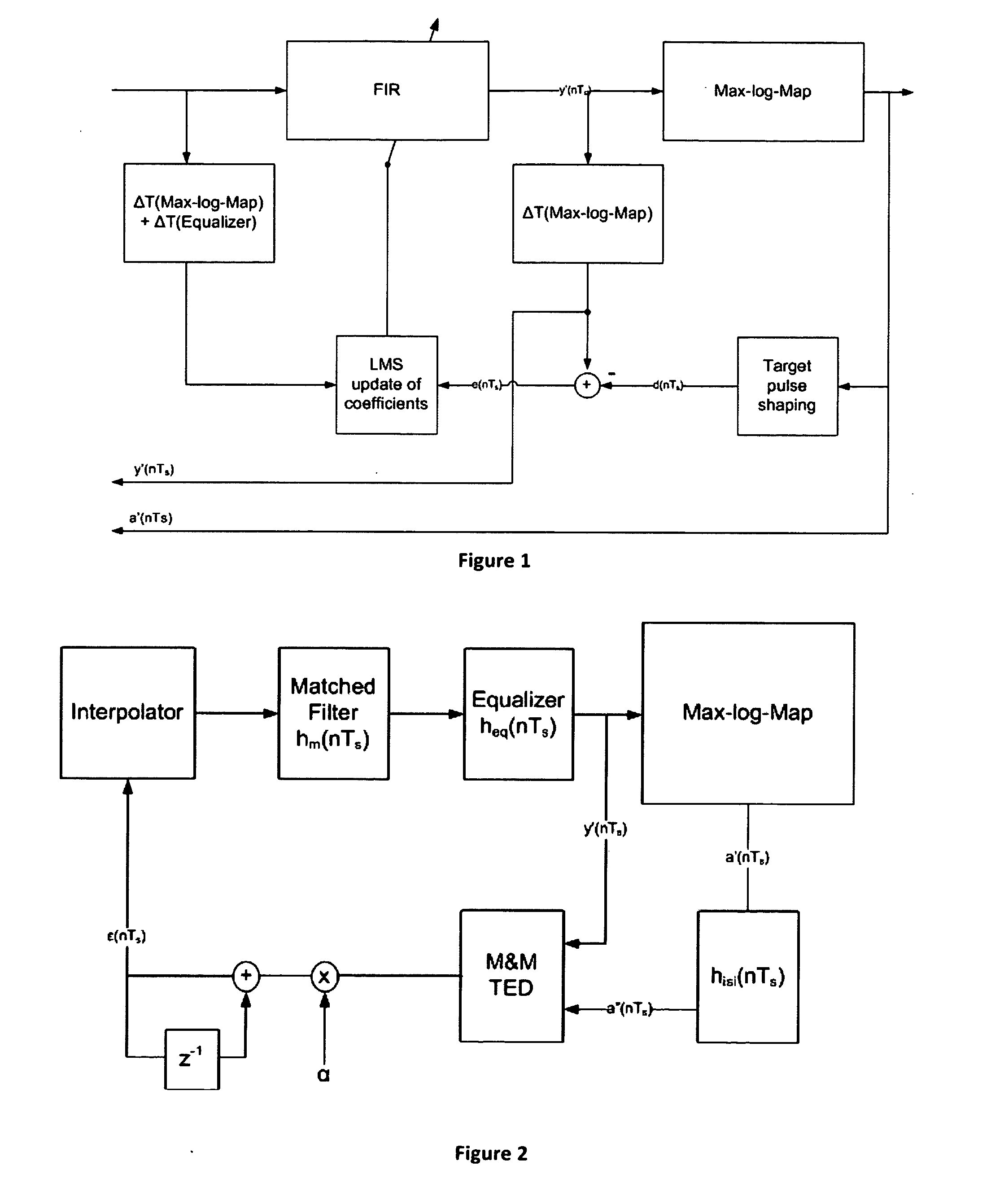Method and apparatus for iterative timing and carrier recovery
a receiver and carrier technology, applied in the direction of synchronisation signal speed/phase control, pulse technique, synchronisation arrangement, etc., can solve the problems of large number of errors, non-data-aided approach, and additional self-nois
- Summary
- Abstract
- Description
- Claims
- Application Information
AI Technical Summary
Benefits of technology
Problems solved by technology
Method used
Image
Examples
Embodiment Construction
[0019]An approach for iterative time recovery for transmission systems is described herein.
[0020]FTN signaling can be modeled as a channel response with memory. Furthermore, the optimum signal detector in an Additive White Gaussian noise (AWGN) band limited channel is the maximum likelihood detector or maximum a posteriori detector if a priori information is available. It is also clear that the optimum symbol detector for FTN signaling relies not only on the current symbol but also the neighbor symbols. The interference introduced by the neighbor symbols is called inter-symbol interference (ISI). The ISI distorted signals are modeled with a trellis structure and its memory is often infinite. So infinite states in the trellis have to be considered for symbol detection. One way to solve this problem is to reduce the number of states in the decoding process by using sub-optimum decoding structures. In this disclosure, the idea of Maximum Likelihood Sequence Estimation (MLSE) is used to...
PUM
 Login to View More
Login to View More Abstract
Description
Claims
Application Information
 Login to View More
Login to View More - R&D
- Intellectual Property
- Life Sciences
- Materials
- Tech Scout
- Unparalleled Data Quality
- Higher Quality Content
- 60% Fewer Hallucinations
Browse by: Latest US Patents, China's latest patents, Technical Efficacy Thesaurus, Application Domain, Technology Topic, Popular Technical Reports.
© 2025 PatSnap. All rights reserved.Legal|Privacy policy|Modern Slavery Act Transparency Statement|Sitemap|About US| Contact US: help@patsnap.com



